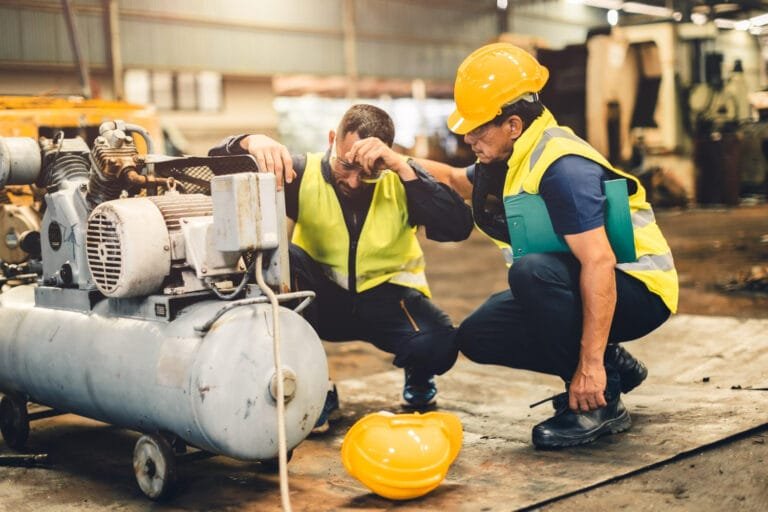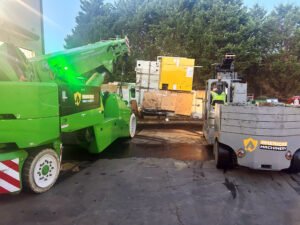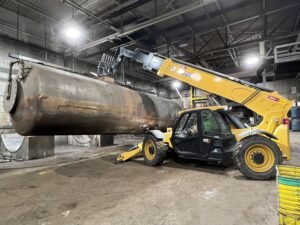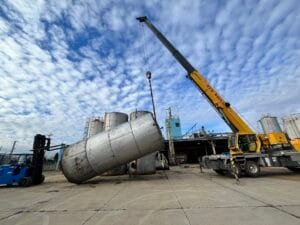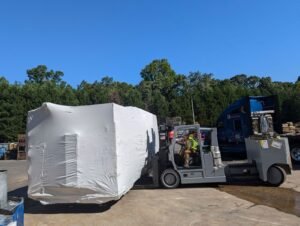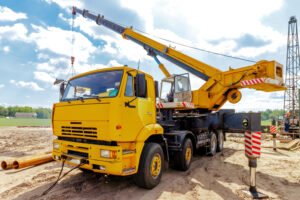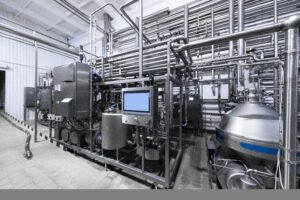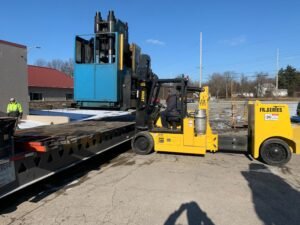Industrial equipment is the backbone of many sectors such as manufacturing, construction, mining, and energy production. It is integral to maintaining efficient operations, and any disruption in its functionality can lead to costly delays, decreased productivity, and safety risks. Equipment failures can stem from numerous causes such as mechanical issues, improper maintenance, and environmental factors. To minimize downtime and prevent financial losses, it is crucial to implement comprehensive solutions that address both the root cause of failures and long-term operational resilience.
This article delves into the critical aspects of managing industrial equipment failures, from the identification and prevention of issues to best practices for timely repairs. Additionally, we will explore how partnerships with reliable service providers such as Alltracon can enhance equipment reliability and performance.
Understanding the Causes of Industrial Equipment Failures
Equipment failures do not occur in a vacuum. Understanding their causes is the first step in implementing effective solutions. Common factors that lead to failures include:
- Mechanical Wear and Tear: Continuous use over time inevitably leads to deterioration of equipment components, resulting in decreased performance or complete failure.
- Improper Maintenance: Skipping scheduled maintenance or using incorrect procedures can accelerate the wear of equipment or contribute to malfunctions.
- Environmental Factors: Dust, humidity, temperature fluctuations, and corrosive substances can cause equipment to malfunction or break down.
- Human Error: Incorrect operation, accidental damage, or improper installation can lead to premature equipment failure.
- Material Fatigue: Equipment subjected to excessive loads or repetitive stress can experience material fatigue, leading to fractures or breakdowns.
Types of Industrial Equipment Failures
Equipment failures can be categorized into several types, each requiring specific solutions. Understanding the nature of these failures helps in identifying the best approach for maintenance, repairs, or replacements.
- Abrupt Failures: These failures occur suddenly and without warning, often causing a complete shutdown of operations. Examples include motor burnouts or sudden hydraulic failures.
- Gradual Failures: These are slow-developing issues, such as wear and tear of bearings or belts, that lead to a gradual decline in performance before the equipment fails.
- Intermittent Failures: These failures occur sporadically, often making them harder to diagnose. An example is a pump that occasionally stops functioning but works fine most of the time.
- Systematic Failures: These are often caused by design flaws or chronic issues within the system. For instance, improperly designed systems may regularly experience cooling issues.
Preventive Maintenance: The First Line of Defense
Preventive maintenance is crucial in avoiding costly repairs and downtime. This involves regular inspections, servicing, and upgrades to ensure that equipment runs efficiently. Key aspects of preventive maintenance include:
- Scheduled Inspections: Regular check-ups to identify early signs of wear or potential issues that could lead to equipment failures.
- Lubrication and Cleaning: Ensuring all moving parts are well-lubricated and free of dirt or debris reduces friction and wear, prolonging equipment life.
- Component Replacements: Regularly replacing parts like belts, filters, and seals before they fail prevents larger issues from developing.
- Calibration: Maintaining proper calibration of sensors, meters, and control systems ensures optimal performance and prevents operational errors.
Predictive Maintenance: Leveraging Technology
Predictive maintenance goes a step further by utilizing technology to predict when equipment failure is likely to occur. This proactive approach allows for repairs or maintenance before the equipment actually breaks down, minimizing downtime. Techniques used in predictive maintenance include:
- Vibration Analysis: Monitoring vibrations in rotating equipment can help detect imbalances, misalignments, or bearing wear.
- Thermography: Thermal imaging detects heat anomalies in electrical systems, bearings, and mechanical parts, helping to prevent overheating and potential fires.
- Oil Analysis: By examining oil samples, engineers can identify contaminants or signs of wear, such as metal particles from worn-out bearings.
- Ultrasound: Ultrasound technology can detect small leaks or cracks in pressurized systems that may not be noticeable by other means.
Reactive Maintenance: Responding to Equipment Failures
Despite the best preventive and predictive measures, equipment failures can still occur. When they do, it’s essential to have a reactive maintenance plan in place to minimize downtime and restore operations quickly. Key aspects of effective reactive maintenance include:
- Rapid Diagnosis: Having a team of trained technicians who can quickly diagnose the problem is critical. The faster the issue is identified, the sooner it can be resolved.
- Spare Parts Inventory: Maintaining a well-stocked inventory of critical spare parts ensures that repairs can be made immediately, without waiting for replacement parts to arrive.
- On-Call Support: In the event of a major equipment failure, having access to 24/7 support from specialists can significantly reduce downtime.
Root Cause Analysis: Preventing Future Failures
When equipment fails, it’s not enough to simply repair the issue and move on. Conducting a root cause analysis (RCA) is essential for understanding why the failure occurred and implementing measures to prevent it from happening again. RCA involves:
- Failure Mode and Effects Analysis (FMEA): Identifying potential failure modes and their impact on equipment performance, then prioritizing corrective actions.
- Fault Tree Analysis (FTA): A systematic approach to identifying the causes of equipment failures, helping to pinpoint both direct and contributing factors.
- Data Collection: Gathering data from sensors, maintenance logs, and repair reports to identify trends and common issues that may lead to equipment failure.
- Corrective Action Plans: Once the root cause is identified, implementing corrective measures to prevent recurrence, such as redesigning components, adjusting maintenance schedules, or retraining operators.
Emergency Response Plans: Mitigating the Impact of Failures
While preventive and predictive maintenance can significantly reduce the risk of equipment failures, having a well-defined emergency response plan is critical for managing unexpected failures. Key components of an emergency response plan include:
- Emergency Shutdown Procedures: Clear instructions for safely shutting down equipment in the event of a failure to prevent further damage or safety risks.
- Communication Protocols: Establishing lines of communication to ensure that all relevant personnel are informed of the failure and the steps being taken to resolve it.
- Contingency Plans: Having backup systems or temporary solutions in place to keep operations running while repairs are being made.
Training and Skill Development
One often overlooked aspect of preventing equipment failures is ensuring that operators and maintenance staff are properly trained. Investing in ongoing training and skill development can help reduce human errors, improve equipment performance, and extend the life of critical assets. Training programs should cover:
- Proper Operation Techniques: Ensuring that equipment is operated according to manufacturer specifications to prevent misuse or overloading.
- Basic Troubleshooting: Teaching operators to recognize early signs of equipment failure and perform basic troubleshooting tasks before calling in maintenance teams.
- Advanced Diagnostics: Providing maintenance personnel with advanced training in diagnostics and repair techniques, particularly for complex or specialized equipment.
Alltracon: A Reliable Partner for Industrial Equipment Solutions
When it comes to addressing industrial equipment failures, having a reliable partner can make all the difference in ensuring timely repairs and minimizing downtime. Alltracon is a trusted name in the field, offering comprehensive solutions for industrial equipment maintenance, repair, and relocation.
With years of experience in the industry, Alltracon has built a reputation for providing top-notch services that prioritize both safety and efficiency. Their team of highly trained technicians is well-versed in handling a wide range of industrial equipment, from heavy machinery to complex production systems. Whether it’s performing preventive maintenance, conducting predictive analysis, or responding to emergency breakdowns, Alltracon delivers tailored solutions that meet the unique needs of each client.
In addition to their expertise in repair and maintenance, Alltracon also offers equipment moving and relocation services, ensuring that businesses can transition to new sites or upgrade their facilities with minimal disruption to operations. Their commitment to quality, reliability, and customer satisfaction makes them a go-to partner for industries seeking to maintain optimal performance and reduce equipment downtime.
Choosing Alltracon as your industrial equipment partner ensures that you are working with a company that understands the importance of minimizing disruptions and maximizing the lifespan of your equipment. Their comprehensive approach to equipment solutions means that you can trust them to handle every aspect of equipment management, from installation and maintenance to repairs and relocation.
The Role of Technology in Equipment Failure Prevention
In today’s rapidly advancing industrial landscape, technology plays a pivotal role in preventing equipment failures and improving overall efficiency. Innovations such as the Industrial Internet of Things (IIoT), artificial intelligence (AI), and machine learning (ML) have revolutionized the way businesses monitor and maintain their equipment.
- IIoT for Real-Time Monitoring: By integrating sensors and connected devices into industrial equipment, the IIoT enables real-time monitoring of performance metrics such as temperature, pressure, and vibration. This data can be used to detect anomalies and predict failures before they occur.
- AI and Machine Learning for Predictive Analytics: AI and ML algorithms can analyze large volumes of data from equipment sensors to identify patterns and predict when failures are likely to happen. This allows businesses to schedule maintenance at the most opportune times, minimizing disruptions.
- Augmented Reality (AR) for Maintenance: AR technology is increasingly being used to assist technicians in performing maintenance and repairs. With AR-enabled devices, technicians can access detailed equipment diagrams, step-by-step instructions, and remote support in real-time, improving the accuracy and speed of repairs.
Cost-Benefit Analysis of Equipment Maintenance Strategies
Maintaining industrial equipment requires a significant investment of time, money, and resources. However, the costs of not maintaining equipment can be far greater, especially when factoring in downtime, lost productivity, and emergency repairs. Conducting a cost-benefit analysis can help businesses determine the most effective maintenance strategy for their operations.
- Preventive Maintenance Costs: Regular maintenance involves routine inspections, part replacements, and minor repairs, all of which incur ongoing costs. However, these costs are typically lower than the expenses associated with major breakdowns.
- Predictive Maintenance Costs: Predictive maintenance requires investment in advanced monitoring systems, sensors, and analytics software. While the upfront costs can be high, the long-term savings in reduced downtime and fewer emergency repairs often outweigh the initial investment.
- Reactive Maintenance Costs: Waiting until equipment fails before performing repairs can lead to significant downtime, lost productivity, and costly emergency services. In addition, equipment that is not properly maintained may have a shorter lifespan, leading to more frequent replacements.
The Future of Industrial Equipment Management
As technology continues to evolve, the future of industrial equipment management will likely be defined by increased automation, data-driven decision-making, and greater integration between equipment and digital systems. Some trends to watch include:
- Smart Factories: The concept of the smart factory, where equipment and systems are interconnected and self-optimizing, is becoming a reality. In smart factories, equipment can communicate with each other, adjust settings based on real-time data, and even perform self-diagnosis and repairs.
- Sustainability Initiatives: As industries become more focused on sustainability, there will be a growing emphasis on optimizing equipment efficiency to reduce energy consumption and minimize environmental impact.
- Collaborative Robotics: The use of collaborative robots (cobots) in industrial settings is increasing. These robots work alongside human operators to assist with tasks such as maintenance, inspections, and repairs, improving safety and productivity.
Conclusion
Managing industrial equipment failures requires a multifaceted approach that includes preventive maintenance, predictive analytics, skilled technicians, and reliable partners like Alltracon. By understanding the causes of equipment failures and implementing comprehensive solutions, businesses can minimize downtime, reduce repair costs, and extend the life of their equipment.
Incorporating advanced technologies and staying informed about industry trends will further enhance the ability to prevent equipment failures and improve operational efficiency. With the right strategies and partners in place, businesses can ensure that their industrial equipment remains a reliable and efficient asset for years to come.
